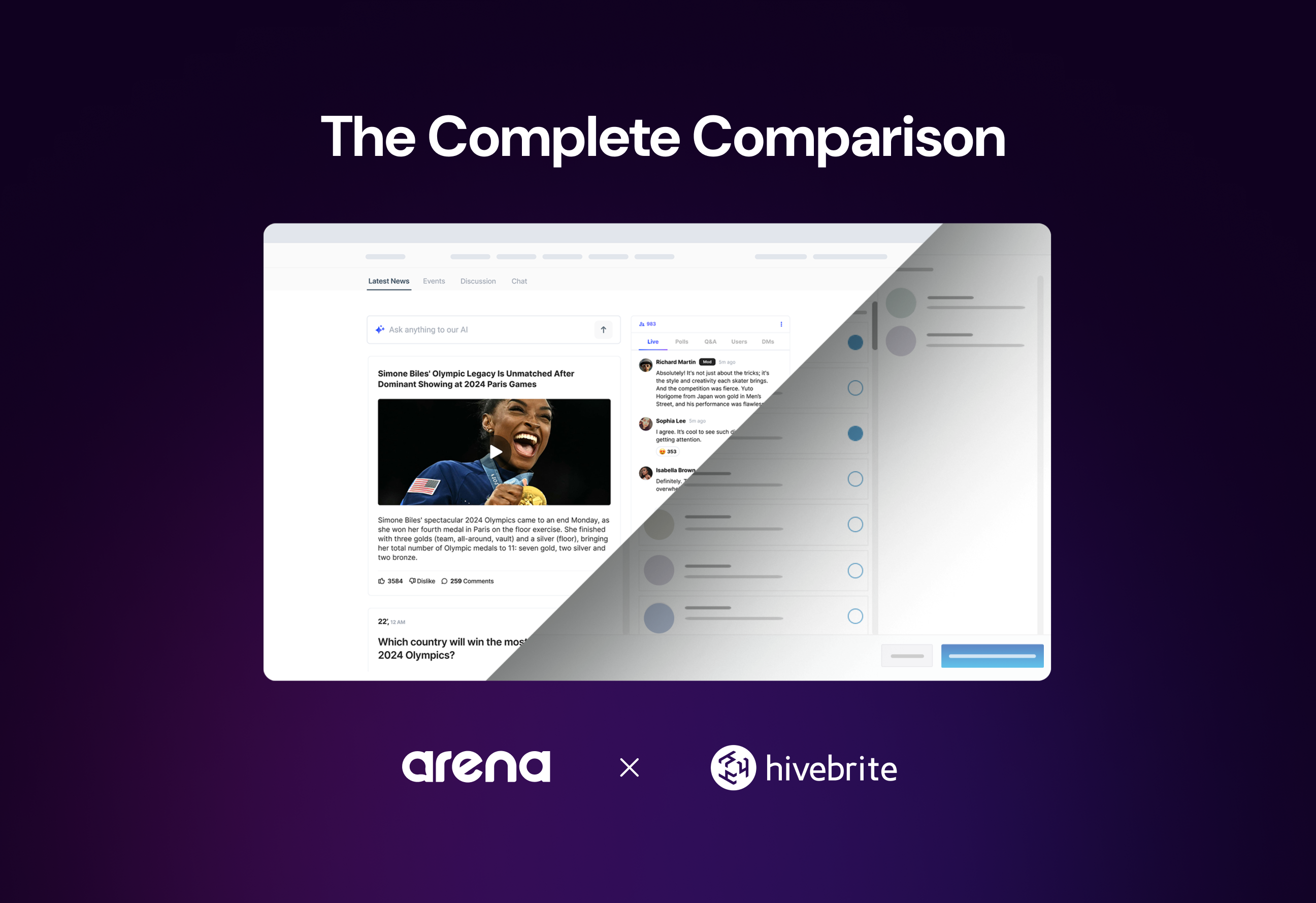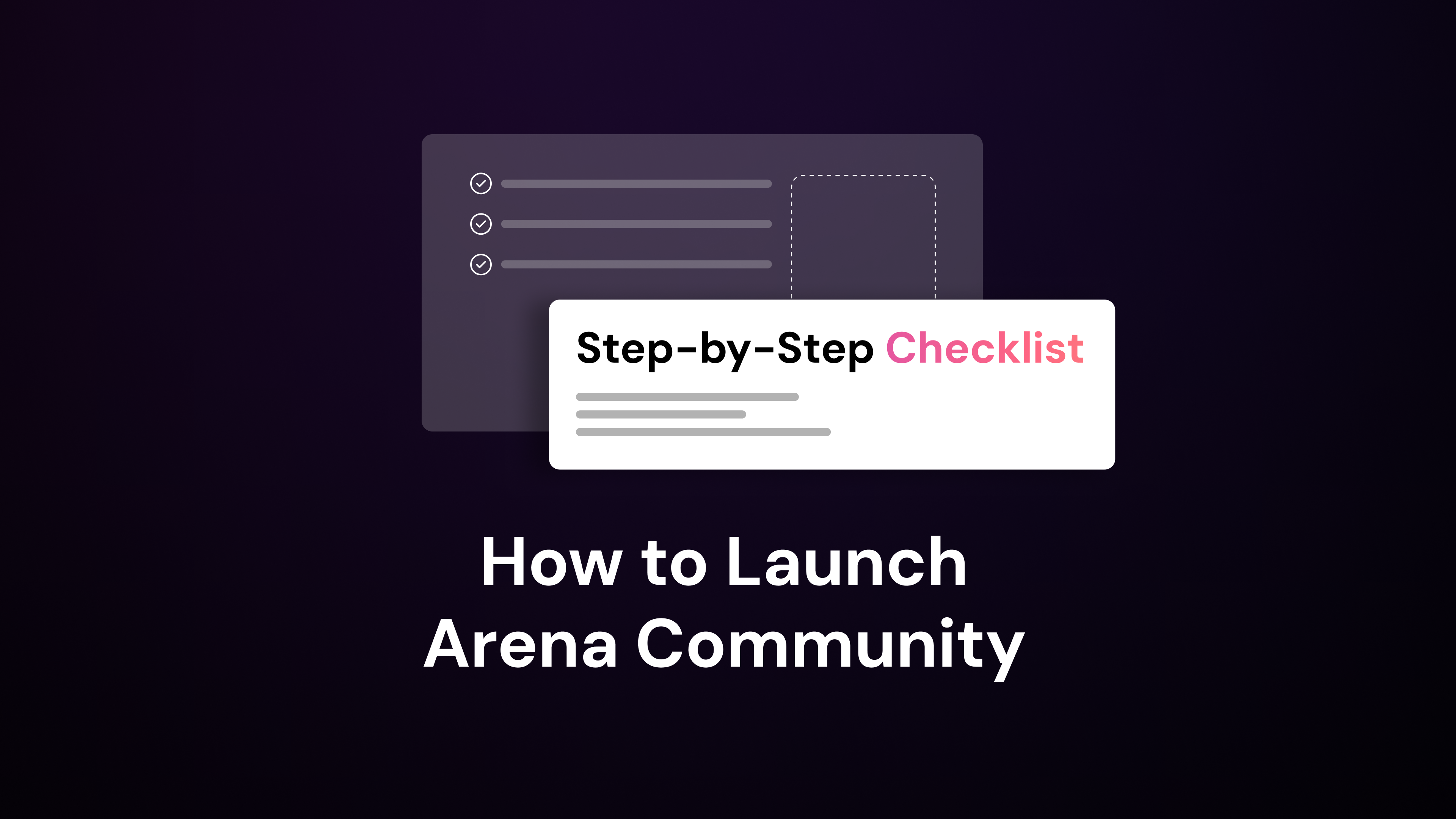Managing content in online communities can feel like juggling multiple balls at once. You need to keep your audience engaged, ensure the content is relevant, and maintain a positive environment. Understanding the basics of online community content management can make this task more manageable.
Online community content management involves creating, organizing, and maintaining content to foster engagement and growth. This process includes moderating user-generated content, curating relevant articles, and organizing everything into clear categories.
Let’s dive into what online community content management entails.
What is Online Community Content Management?
It’s about creating, organizing, and maintaining content within online communities to foster engagement, collaboration, and growth. This involves several key activities:
- Moderating User-Generated Content: Ensuring that posts, comments, and discussions adhere to community guidelines and maintain a respectful environment.
- Creating and Curating Relevant Content: Sharing articles, videos, and resources that are valuable to the community members. This helps keep the community informed and engaged.
- Organizing Content into Categories and Topics: Structuring the content in a way that makes it easy for members to find and interact with. This could involve creating specific forums or threads dedicated to different topics.
Effective content management in online communities keeps the community active and helps build a strong, loyal member base. Check out this comprehensive guide for more insights on building thriving online communities.
How to Create a Content Strategy for Your Online Community
Before jumping into the specifics, it’s crucial to understand why a solid content strategy matters.
1. Define Your Community’s Purpose and Goals
Start by identifying the main objectives of your online community. Are you aiming to provide a space for users to share knowledge, offer support, or foster a sense of belonging? Clearly defining your purpose helps guide your content strategy. For example, if your goal is to educate, your content might include tutorials, how-to guides, and expert interviews. If the aim is to build a support network, focus on discussion forums and Q&A sessions.
2. Understand Your Audience
Research your target audience’s interests, needs, and preferences. Use surveys, polls, and analytics tools to gather data on what your members care about. Look at demographic information, but also dig deeper into their behaviors and motivations. What problems are they trying to solve? What types of content do they engage with most? Understanding these aspects helps tailor your content to meet their expectations and keep them engaged. For more on engagement strategies, explore customer vs audience engagement.
3. Determine Content Themes and Categories
Identify key topics and themes that align with your community’s purpose. Create a list of broad themes that cover the interests and needs of your audience. For instance, a fitness community might have themes like workout routines, nutrition tips, and mental health. Break these themes down into specific categories to organize your content effectively. This structure makes it easier for members to find relevant information and participate in discussions.
4. Establish a Content Calendar
Plan and schedule content creation and curation using a content calendar. This tool helps you stay organized and ensures a steady flow of content. Decide on the frequency of your posts—daily, weekly, or monthly—depending on your community’s activity level. Include a mix of content types, such as articles, videos, and interactive posts, to keep things fresh. A content calendar also helps you plan around key dates and events, ensuring timely and relevant content.
5. Set Key Performance Indicators (KPIs)
Define metrics to measure the success of your content strategy. KPIs provide a way to track progress and make data-driven decisions. Common KPIs for online communities include engagement rates, such as likes, comments, and shares, as well as member growth and retention rates. You might also track the performance of specific content types to see what resonates most with your audience. Regularly review these metrics to adjust your strategy and improve outcomes.
5 Tips for Effective Online Community Content Management
Feeling lost on where to start with content management? Here are some practical tips to guide you.
Encourage User-Generated Content
Create opportunities and incentives for members to contribute content. User-generated content brings authenticity and diverse perspectives to your community. Encourage members to share their experiences, ask questions, and provide feedback. You can do this by setting up discussion threads, hosting Q&A sessions, or creating challenges that prompt members to share their stories. Offering incentives like badges, recognition, or even small rewards can motivate members to participate more actively.
Maintain a Consistent Brand Voice
Ensure all content aligns with your brand’s tone and values. Consistency in your brand voice helps build trust and recognition among community members. Whether it’s a post from a community manager or a reply to a member’s comment, the tone should reflect your brand’s personality. Develop a style guide that outlines your brand’s voice, including preferred language, tone, and messaging guidelines. Share this guide with everyone involved in content creation to maintain uniformity across all interactions.
Use a Mix of Content Formats
Incorporate text, images, videos, and interactive content to keep members engaged. Different formats cater to different preferences and can make your community more dynamic. Text posts are great for detailed information, while images and videos can capture attention quickly and convey messages more effectively. Interactive content like polls, quizzes, and challenges can boost engagement by encouraging members to participate actively. Regularly mix these formats to keep the content fresh and appealing.
Regularly Update and Refresh Content
Keep content fresh and relevant to maintain member interest. Stale content can lead to disengagement, so updating and refreshing your community’s content regularly is important. This could mean posting new articles, updating old posts with current information, or introducing new discussion topics. Pay attention to trending topics and incorporate them into your content strategy. Regular updates show that the community is active and evolving, which can help retain member interest.
Monitor and Respond to Feedback
Actively listen to community feedback and adapt your content strategy accordingly. Feedback from your community members provides valuable insights into what works and what doesn’t. Monitor comments, suggestions, and discussions to understand their needs and preferences. Respond to feedback promptly and make necessary adjustments to your content strategy. This shows members that their opinions matter and helps create a more tailored and engaging community experience.
Types of Content in Online Communities
Creating and managing content in an online community isn’t just about posting updates; it’s about fostering a space where members feel valued and engaged.
User-Generated Content
User-generated content forms the backbone of most online communities. This includes posts, comments, and discussions initiated by community members. These contributions create a dynamic and interactive environment where members can share their experiences, ask questions, and provide feedback. User-generated content fosters a sense of ownership and belonging among members, making the community more vibrant and engaging. Learn how to increase engagement with user-generated content to boost your community’s activity.
Curated Content
Curated content involves selecting and sharing relevant articles, videos, and resources. Community managers play a key role in this process, ensuring that the content aligns with the interests and needs of the community. Community managers help keep members informed and engaged by providing valuable and informative content. Curated content can include industry news, educational materials, and other resources that add value to the community. Discover proven tactics to grow engagement through effective content curation.
Branded Content
Branded content is created by the organization or brand that runs the community. This type of content aims to engage and inform community members while reinforcing the brand’s message and values. Branded content can take various forms, such as blog posts, videos, infographics, and announcements. It helps establish the brand’s authority and fosters a deeper connection between the brand and its community members.
Interactive Content
Interactive content includes polls, quizzes, and challenges designed to encourage participation and engagement. This type of content effectively keeps members active and involved in the community. Polls can gather opinions on various topics, quizzes can test knowledge or provide entertainment, and challenges can motivate members to achieve specific goals. Interactive content makes the community more engaging and provides valuable insights into members’ preferences and behaviors.
Benefits of Effective Community Content Management
Managing content effectively can significantly impact your community’s success, but why should you care?
Increased Engagement
Effective content management keeps your community members active and invested. When you consistently provide relevant and engaging content, members are more likely to participate in discussions, share their thoughts, and contribute their own content. This creates a vibrant and dynamic community where members feel valued and connected. Regular updates and interactive content, such as polls and quizzes, can further boost engagement by encouraging members to interact with the content and each other. For more strategies, explore the ultimate guide to audience engagement.
Improved User Experience
A well-organized community makes it easy for members to find the content and resources they need. By categorizing content into clear topics and sections, you help members navigate the community effortlessly. This improves their overall experience and encourages them to return. Additionally, having a structured content management system ensures that outdated or irrelevant content is regularly updated or removed, keeping the community fresh and relevant. This streamlined experience enhances member satisfaction and retention.
Enhanced Brand Loyalty
Consistent and thoughtful content management builds trust and strengthens the relationship between your brand and community members. When members see that you are committed to providing valuable and relevant content, they are more likely to develop a positive perception of your brand. This trust fosters loyalty, as members feel that their needs and interests are being addressed. Engaging with members through branded content and responding to their feedback also shows that you value their input, further deepening their connection to your brand. Learn how to optimize funnel conversions with effective engagement strategies.
Valuable Insights
Effective content management provides valuable data and feedback that can inform your content strategies and product development. By analyzing which types of content resonate most with your community, you can tailor your future content to better meet their needs. User-generated content and interactions offer insights into member preferences, pain points, and interests. This information can guide your content creation efforts and help you develop products or services that align with what your community values. Regularly reviewing content performance metrics allows you to make data-driven decisions and continuously optimize your content strategy to keep your community thriving.
How does Online Community Content Management Work?
Feeling overwhelmed by the idea of managing your community’s content? You’re not alone, but breaking it down into manageable steps can make a world of difference.
Developing a content strategy aligned with community goals Start by defining what you want to achieve with your community. Your content strategy should align with these goals, whether it’s increasing member engagement, providing support, or fostering discussions. This involves planning the types of content you’ll create, how often you’ll post, and the platforms you’ll use. Learn how to grow engagement with a virtual community to enhance your content strategy.
Establishing content guidelines and moderation policies: Clear guidelines help maintain a positive and respectful environment. Outline what types of content are acceptable, how members should interact, and the consequences of violating the rules. Moderation policies ensure these guidelines are consistently enforced, using both human moderators and automated tools to review content.
Regularly creating and curating relevant content: Consistency is key. Regularly post new content that is relevant and valuable to your community. This could include articles, videos, and updates. Curate content from other sources that align with your community’s interests to keep the content diverse and engaging. For real-time engagement strategies, explore real-time audience engagement.
Encouraging user-generated content and engagement: Foster a sense of ownership by encouraging members to contribute their own content. Create opportunities for them to share their experiences, ask questions, and provide feedback. This not only increases engagement but also builds a stronger community.
Analyzing content performance and user feedback: Track how your content is performing using analytics tools. Look at metrics like engagement rates, shares, and comments to understand what resonates with your community. Collect feedback from members to gain insights into their preferences and needs. Learn how to track audience engagement growth and course correct effectively.
Continuously optimizing content based on insights and community needs: Use the data and feedback you gather to refine your content strategy. Identify what works and what doesn’t, and make adjustments accordingly. This might involve changing the types of content you post the frequency of updates, or the platforms you use. Regularly updating your strategy ensures your community remains relevant and engaging.
What are the Best Practices for Online Community Content Moderation?
Moderation is often a major pain point for community managers, but following best practices can make a big difference.
Establish Clear Community Guidelines and Rules
Set clear and straightforward guidelines for your community. These rules should outline acceptable behavior, the types of content allowed, and the consequences of violating these standards. Make sure these guidelines are easily accessible to all members. Clear rules help maintain order and set expectations for everyone involved.
Train Moderators to Enforce Guidelines Consistently
Consistency is key in moderation. Train your moderators thoroughly so they understand the guidelines and know how to enforce them fairly. Regular training sessions can help keep everyone on the same page and ensure that moderators handle situations uniformly. This consistency builds trust within the community and helps avoid misunderstandings.
Use a Combination of Human Moderation and Automated Tools
Relying solely on human moderators can be overwhelming, especially in large communities. Combine human moderation with automated tools to streamline the process. Automated tools can quickly flag inappropriate content, while human moderators can review and make final decisions. This approach balances efficiency with the nuanced understanding that only humans can provide.
Respond Promptly to Reported Content and Member Concerns
Timely responses to reported content and member concerns show that you value your community’s well-being. Set up a system to ensure that reports are addressed quickly. Prompt action helps prevent issues from escalating and demonstrates that the community is actively managed. It also reassures members that their concerns are taken seriously.
Regularly Review and Update Moderation Policies
Community needs and online behaviors evolve over time. Regularly review and update your moderation policies to keep them relevant. Gather feedback from moderators and community members to identify areas for improvement. Updating policies ensures they remain effective and aligned with the community’s current needs.
Foster a Positive and Inclusive Community Culture
Encourage a culture of respect and inclusivity within your community. Highlight positive interactions and recognize members who contribute constructively. Promote diversity and ensure that all members feel welcome and valued. A positive culture enhances member experience and reduces the likelihood of conflicts and negative behavior.
Take Your Online Community Content Management to the Next Level
Managing content in online communities can be challenging, but with the right tools, you can streamline the process and enhance engagement. Arena offers a comprehensive suite of AI-driven solutions designed to make content management more effective and efficient. From real-time chat and live blogging to interactive polls and quizzes, our platform provides everything you need to keep your community active and engaged.
Don’t let content management overwhelm you. Arena’s advanced features, such as AI moderation and dynamic content updates, ensure your community stays vibrant and relevant. Sign up now to discover how Arena can transform your online community content management and drive meaningful interactions. Visit our pricing page to get started today.



